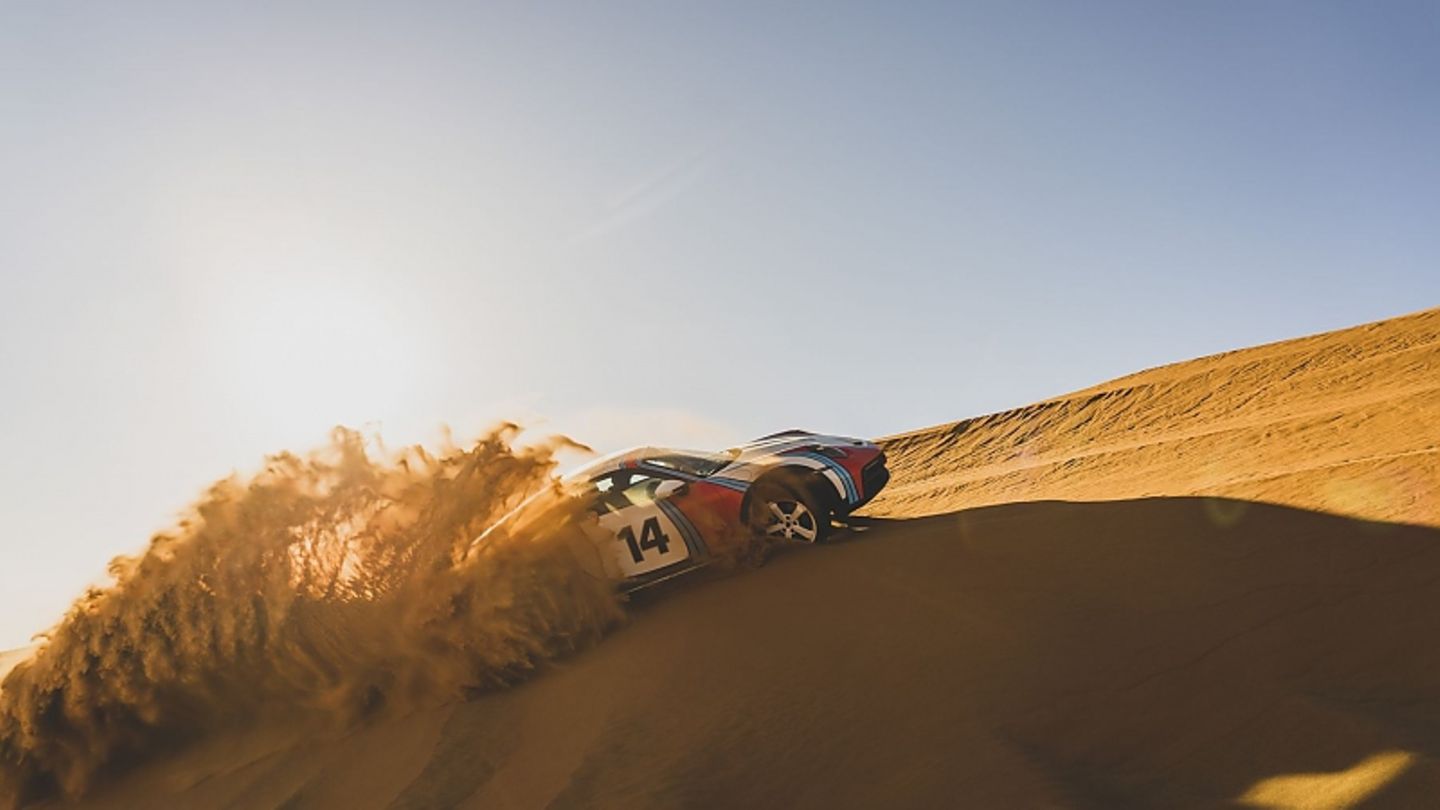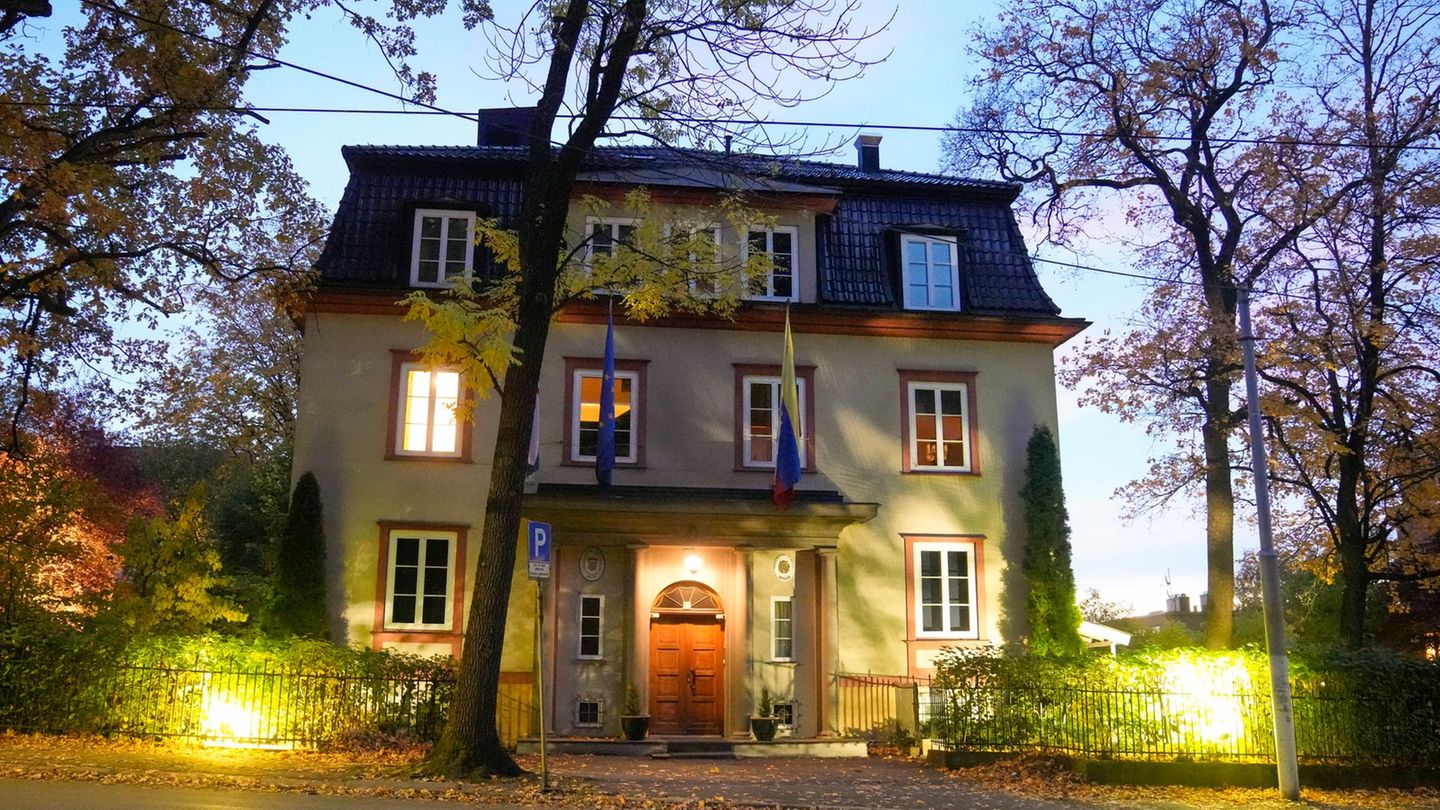Porsche is resurrecting the winner of the 1984 Dakar Rally. The new edition based on the 911 GTS lives up to its name, but comes at a price.
The monstrous sand dune shimmers reddish in the Sahara sun. We want to climb it. Not in any car, but in a 911 on stilts. So the successor to the winner of the Dakar Rally in 1984. Fearless, the off-road athlete throws himself down the slope, briefly wiping his snout over the fine particles before the compression brutally crushes the chassis. The voice of the Porsche expert shoots through our heads: “As soon as the car is compressed, step on the gas. Without compromises.” We step on the pedals. As if bitten by a tarantula, the Dakar Porsche sprints up the steep hill. It helps that this 19-degree nine-eleven has the ramp angle of a Porsche Cayenne. We see a lot of blue and little sand. Doesn’t matter. We stay on the stamp. Standing still means digging up with a high probability. Now it goes right into a steep curve, the rear comes to life, the tires plow through the sand, we see a sand fountain rising out of the corner of our eye and quickly steer against it. The 911 immediately finds its way back on track and straightens itself out. Class! The grin on our face resembles that of a current BMW 7 series kidney and remains stapled even after the wild ride through the Sahara desert.
This off-road bolide was a difficult birth. Ten years ago, Thomas Krickelberg and the current Lamborghini designer Mitja Borkert had the idea of reviving the winner of the 1984 Dakar Rally with modern technology. But as is sometimes the case, the time is not yet ripe and the product strategists veto it. That has now changed. The implementation seems simple at first glance. Take the nine-eleven and give it a new chassis with more ground clearance, garnish the whole thing with underbody protection and wider wheel arches. Not even close. The body is five centimeters higher than that of the road-going 911 with sports suspension. The lift chassis had to be adjusted so that the body rushes up another three centimeters on command. The principle is similar to that with which the front axle is raised on the road 911s. However, the Dakar is a completely different matter, since the Porsche can be up to 170 km/h on extended stilts and not just lift its nose for a short time. For this reason, the technicians have increased the volume of the hydraulic radial piston pump and added an accumulator so that the pump does not have to run constantly and the pressure of 135 bar (normal front-axle lift chassis 110 bar) remains constant. It goes without saying that there is now an actuator on each wheel and not just on two.
In order for the athlete to be able to function over hill and dale, not only special all-terrain tires are required (a special Pirelli development with lugs nine millimeters deep, reinforced flanks and two carcass layers under the treads), but also appropriate driving systems. Because in addition to Normal, Sport and Wet, this Porsche also has Rally and Off-Road up its sleeve. While in rallies the power mainly goes to the rear, off-road is intended for such stunts as chasing the dunes and the Porsche 911 Dakar stretches the legs by another three centimetres. When it comes to the driving systems, the grace of late birth helps the Dakar 911. Since it is the last car before the Zuffenhausen athlete’s facelift, the dynamics are also mature, which made the engineers’ work easier. “The Dakar has all the weapons on board,” says Thomas Krickelberg. So, among other things, an adjustable limited-slip differential on the rear axle, rear-axle steering, four-wheel drive and roll stabilization, adaptive dampers. Still, voting wasn’t easy. “We turned all systems inside out,” explains driving dynamics systems expert Holger Kleinknecht.
Every detail is important. The engine mounts come from the 911 GT3 and are stiffer than those in the GTS. The engine and transmission weighs more than 300 kilograms and the bearings prevent the unit from going up and down more effectively when the Porsche is pounding over hill and dale at full speed. “This also brings a Touch GT3 into the car”; knows Achim Lamparter, overall project manager 911 Dakar. You notice that after just a few kilometers on asphalt roads. This 911 also sweeps through the curves with tight suspension and minimal steering movement. With 353 kW / 480 hp and a maximum torque of 570 Newton meters, the Dakar 911 has more than enough motor and is also one of the alpha animals in the dynamics department. If you want to dance the dynamic tango, you will find the right dance partner with the stilt nine-eleven. Which is also light-footed. The CFRP bonnet from the 911 GT 3 with the conspicuous nostrils, light windows, sports bucket seats, the missing rear seat and the fixed carbon composite help to reduce the weight of the off-road rocket to 1,605 kilograms. That is only ten kilograms more than the Porsche 911 Carrera 4 GTS with the same eight-speed dual clutch transmission. And that despite the stable roll bar and the underbody protection on the vehicle. Because a nine-eleven has to be extremely fast on the race track. That’s in every specification. The Porsche 911 Dakar needs just under eight minutes for a lap on the Nordschleife of the Nürburgring and is therefore just as fast as the 911 GT3 (of the 996 series).
If you want to avoid the crowded traffic arteries and want to prove your rallying skills on dirt roads, activate the driving program of the same name and be happy about the rear-biased drive. Lateral is more, is the motto. The Porsche remains true to itself even on this surface. It’s unbelievable how much karacho you can pepper around corners even on loose ground. However, the passenger is so shaken up that he often wants a second grab handle.
In order to secure a modern Dakar 911, you have to be quick and have some change in your pocket. Only 2,500 copies will be built at a price of 222,020 euros. On request also with the right paintwork including a rally package for 26,061 euros. The customer can also choose between the digits 1 and 999 for the start number on the doors. Politically correct, of course: instead of “Rothmans Porsche”, the lettering “Roughroads Porsche” now adorns the flanks. Those who are satisfied with the “Rallye 1978” decorative adhesive set, as with our test car, only have to pay 5,950 euros.
So that the appearance is also perfect, there is a 12-volt power connection on the roof for the additional headlights of the optional roof basket (5,355 euros). Important rally paraphernalia such as a water canister (from EUR 59.50) and a folding spade (EUR 95.20) fit into it. For real Dakarlers, Porsche even has a roof tent (from 4,980.15 euros) ready. One can assume that this detail will be ordered for almost every Dakar Porsche, which in no time at all will end up at around 250,000 euros. So the expression “give me the gravel” has more than one meaning for this Querfeld-an-artist.
Source: Stern
I’m a recent graduate of the University of Missouri with a degree in journalism. I started working as a news reporter for 24 Hours World about two years ago, and I’ve been writing articles ever since. My main focus is automotive news, but I’ve also written about politics, lifestyle, and entertainment.




